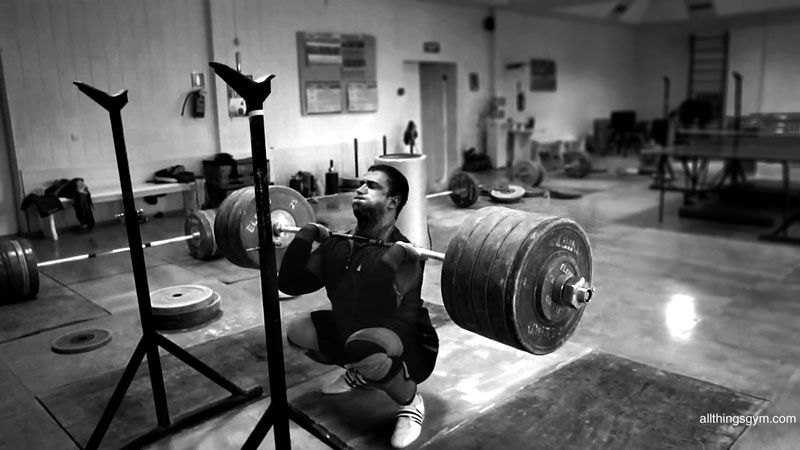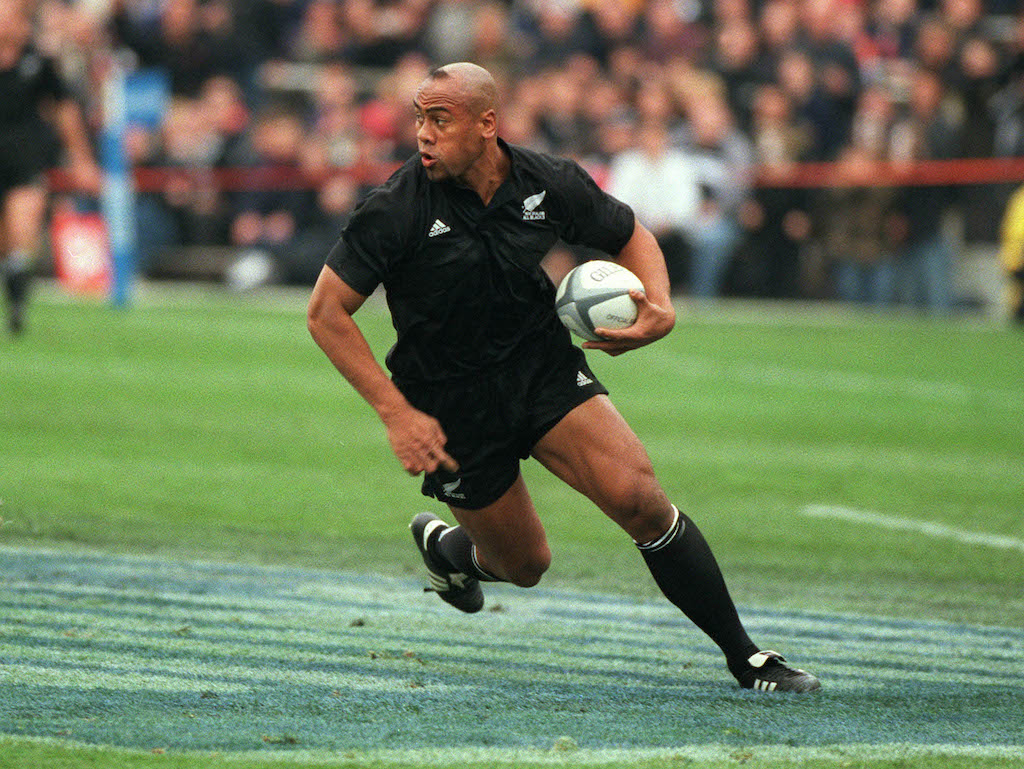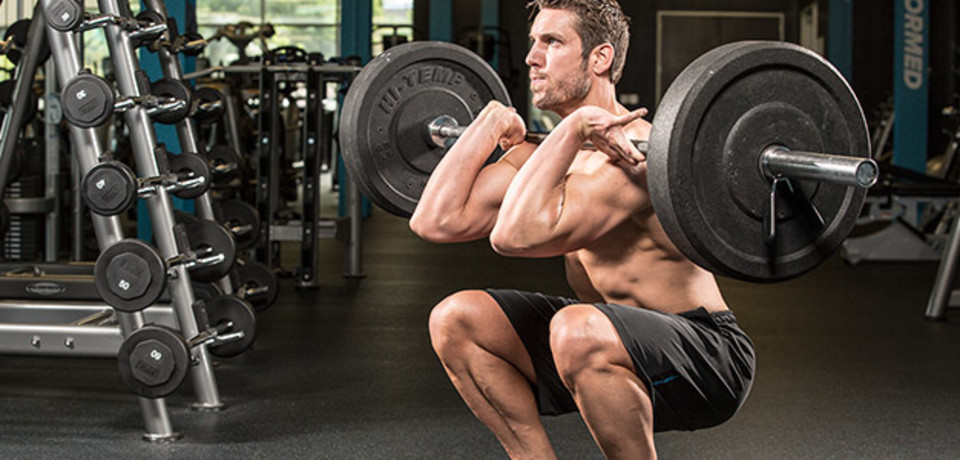When it comes to leg training, not all squats are made equal.
The front squat and the back squat are like two brothers. The back squat is the older, more popular and more approachable brother. Everyone around town is familiar with him, and he’s got a lot of friends. His younger brother, the front squat is a scarier, more mysterious dude. He hangs around with strange people like Olympic lifters and strongmen. He looks physically imposing, and lots of people are put off by his reputation, unwilling to give him a chance.
One of your training resolutions for 2022 should be to give ‘brother’ front squat an opportunity to impress you. Don’t be put off by the reputation for technical difficulty; there are several adjustments that can be made to support you in adapting this particular lift.
What you will find is a lift that is a greater quad developer, helps you reach a more natural squatting angle and in some ways may actually be safer.

Front squat reason 1: bigger quads

Have you ever seen an Olympic lifter’s quads?
Go to Google and have a look at Pyrros Dimas, Dmitry Klokov or Lu Xiaojun. What do they have in common, apart from being mightily impressive athletes? Huge, meaty quads with a VMO (the teardrop muscle on the inside of your thigh) that looks like an overstuffed calzone.
And how do they obtain this? Front squats. Thousands of them. Traditionally Olympic Lifters won’t do high rep squats with front squats – usually a set of three is the limit – which is contrary to bodybuilding lore on muscle development. What they will do, however, is lots of sets of triples, doubles and even singles. Day in, day out.
Over time, with good recovery and nutrition protocols, this forces the body to adapt in the same way as doing sets of 10-12 once or twice a week, by stimulating muscular growth.
Due to the bar positioning in the Front Squat, you will also find them much less impactful on the hamstrings, meaning you could do them on or near the same day as you do your deadlifts. Just make sure that you have money in the bank for replacement work trousers because they will soon rip under the pressure of your new-born twin Quadosaurus Rex.
Front squat reason 2: better biomechanics

One of the reasons people are put off by the front squat is because they think it’s a trickier lift to learn.
Whilst there is an element of truth to this and ignoring the hand placement issue (we’ll come to this later), the reality of front squats is that the upright torso position necessary to perform a correct front squat is, biomechanically speaking, a big “win” for all kinds of reasons.
It has great carryover to contact sports like American football and rugby where you need to be upright, powerful and have a strong core. This upright position also provides for a larger range of motion and with this an effortlessly deeper squat, where it is much less likely that your hips will limit your squat by banging into your femurs.
A third biomechanical benefit of the upright torso and having the bar over your shoulders rather than your back is that the amount of shear stress going through your spine is reduced, meaning you’re less likely to aggravate any back injuries, making front squats the ideal squatting variety for the taller lifter or those with a history of back trouble.
As if this isn’t enough, the front rack position (bar across the shoulders, hands in support) is going to have secondary benefits in giving you better T-spine mobility and will even develop the smaller (and bigger) muscles of your upper back, making you generally stronger and more rounded as a strength athlete. What’s not to love?
Front squat reason 3: safety

The front squat has safety built in.
Most reading this will know the fear of being pinned under a heavy back squat – and a few will know what that feels like without a spotter. It is not an experience I would recommend.
The front squat is a much safer lift to partake of without spotters because if you can’t get the rep, you can just let it go. No worries about being crushed under 400lbs of iron, it will roll effortlessly away from your body, the main indignity coming when you have to strip the weight off to get it back up on the rack. For this reason alone, the front squat outranks the back squat; however this is not the only safety feature of this great lift.
Regardless of how much you can squat, the loading of the heaviest front squat you can perform will naturally be lower than the loading of the heaviest back squat, meaning that you are limiting the weight used to start with. Less weight, less opportunity to get injured.
A word on the front rack position
Many coaches I speak to think the Front Squat is a more intuitive and easier lift to teach than the back squat.
I am not sure I agree with this 100% and would usually progress up from goblet squats with a kettlebell, to a back squat then a Front Squat, and the reason for this is the front rack position.
You have probably seen Olympic Lifters or Crossfitters doing front squats with their wrists under the bar and their forearms rotated with elbows pointing upwards. This is the ‘catch’ position of the clean and provides the most secure base for a barbell to rest on as it sits in the grooves of your shoulders.
To be clear, you don’t need to learn this position to enjoy the benefits of front squats. If you look at pictures of Golden Age bodybuilders like Tom Platz front squatting you will see their hands criss-crossed in front of them, right fingers touching left shoulder and vice versa. This is a perfectly good substitution for the front rack position as it allows you to elevate the shoulders without having to worry about wrist mobility.
You can also use straps to mimic the front rack position if your mobility is not where it needs to be to perform the lift in the orthodox way. Whilst the wrist flexibility is good to have, it need not be the limiting factor on whether you can tap into the many benefits of front squats.
The last resolution you’ll ever need to make
Gone are the endless failures — now it’s time to make a stand, once and for all.
Do you need to:
hone your discipline
build muscle
lose fat
transform your body
ingrain GOOD habits
quit your vices
improve your relationships
boost your confidence
become more attractive
be a better person?
Well, this bundle has it ALL.
CLICK HERE TO CHANGE YOUR LIFE FOR THE BETTER – FOREVER!
Summary

Yes they can look intimidating, but front squats are worth getting to grips with.
A bigger range of motion, a safer outcome, and a more upright spine, with slabs of muscle added to your upper back, and a stronger core too – you owe it to yourself to start 2022 by incorporating this lift into your routine.
Substitute front squats for back squats for a period of four to six weeks and see how you feel.
If you are a more advanced lifter, then the reduced hamstring impact could mean that you perform front squats on your deadlift day and keep back squats for later in the week.
However you implement them, have fun exploring this incredibly enjoyable lift.
Just remember to thank me when your quads bust out of your jeans.

Don’t hesitate to email us at [email protected] for personalized coaching and a client questionnaire if you’d like DEDICATED tailor-made personal training on strength training, building muscle, losing fat, developing athleticism, and more — all to your liking, lifestyle, habits, and taste!
Otherwise, don’t forget to claim your FREE eBook detailing how to lose 20lb of fat while building muscle in 12 weeks! You can claim it here.
Alternatively, you can pick up a FREE eBook on fundamental strength principles offering an introductory workout program.











